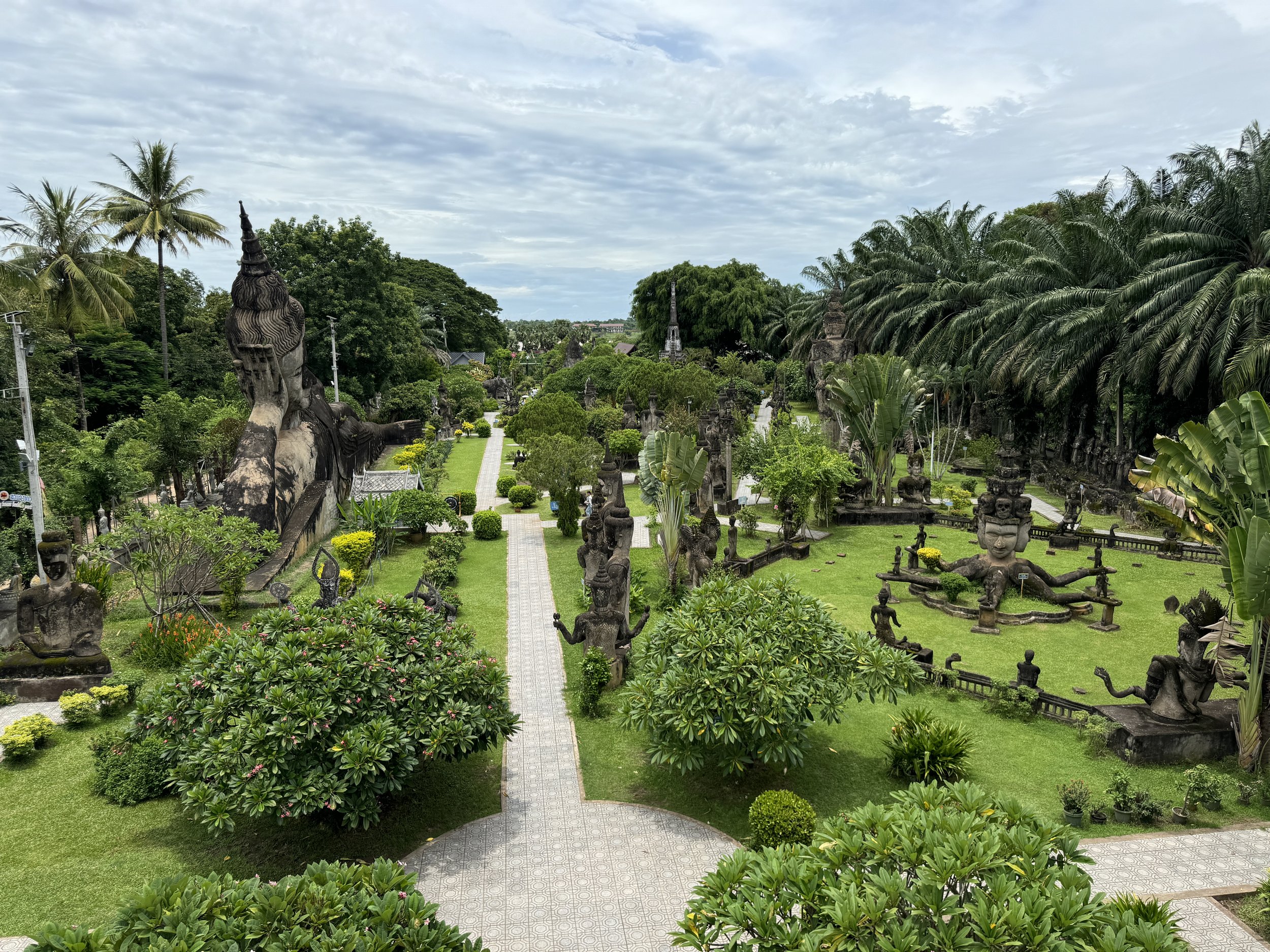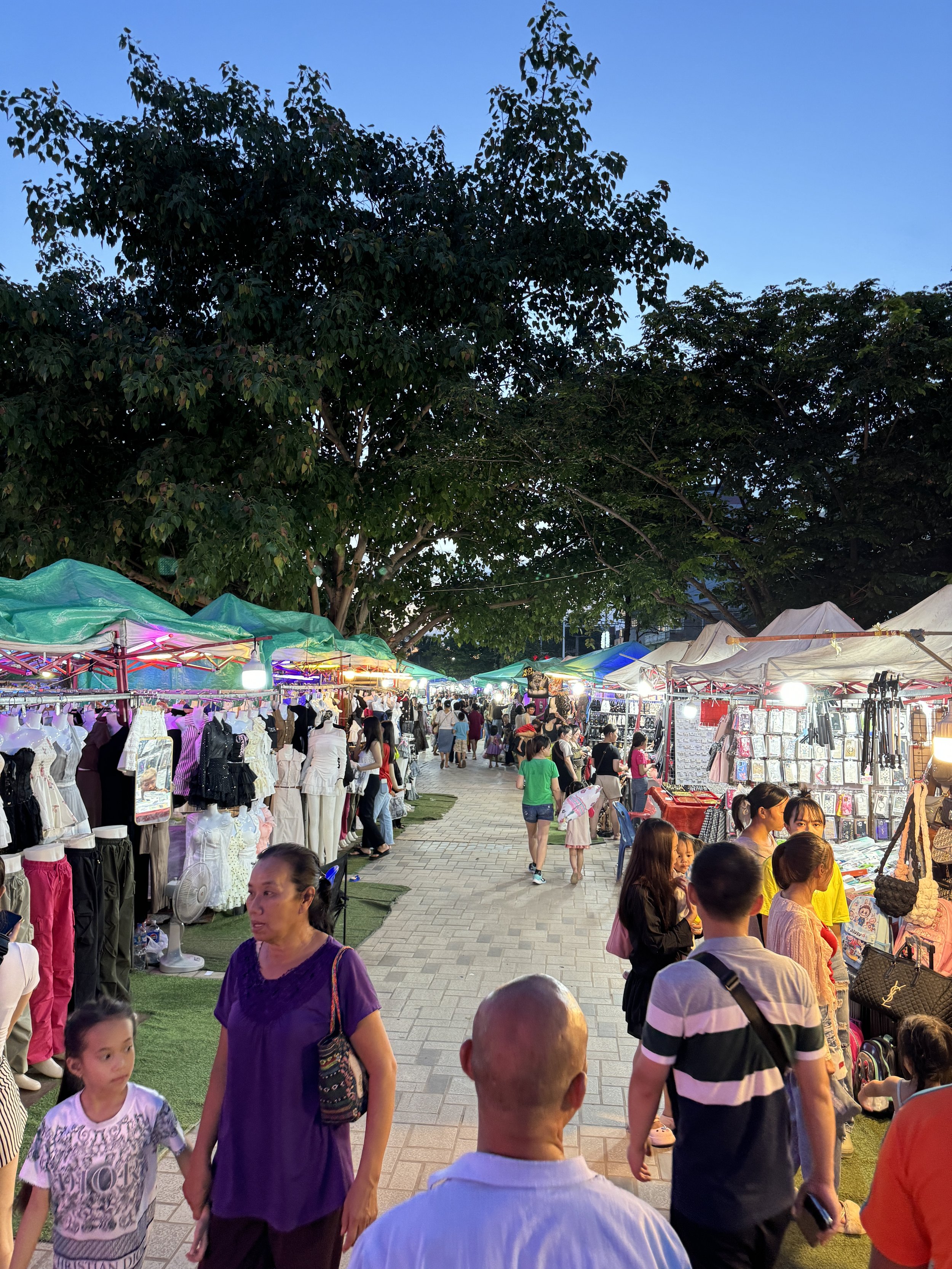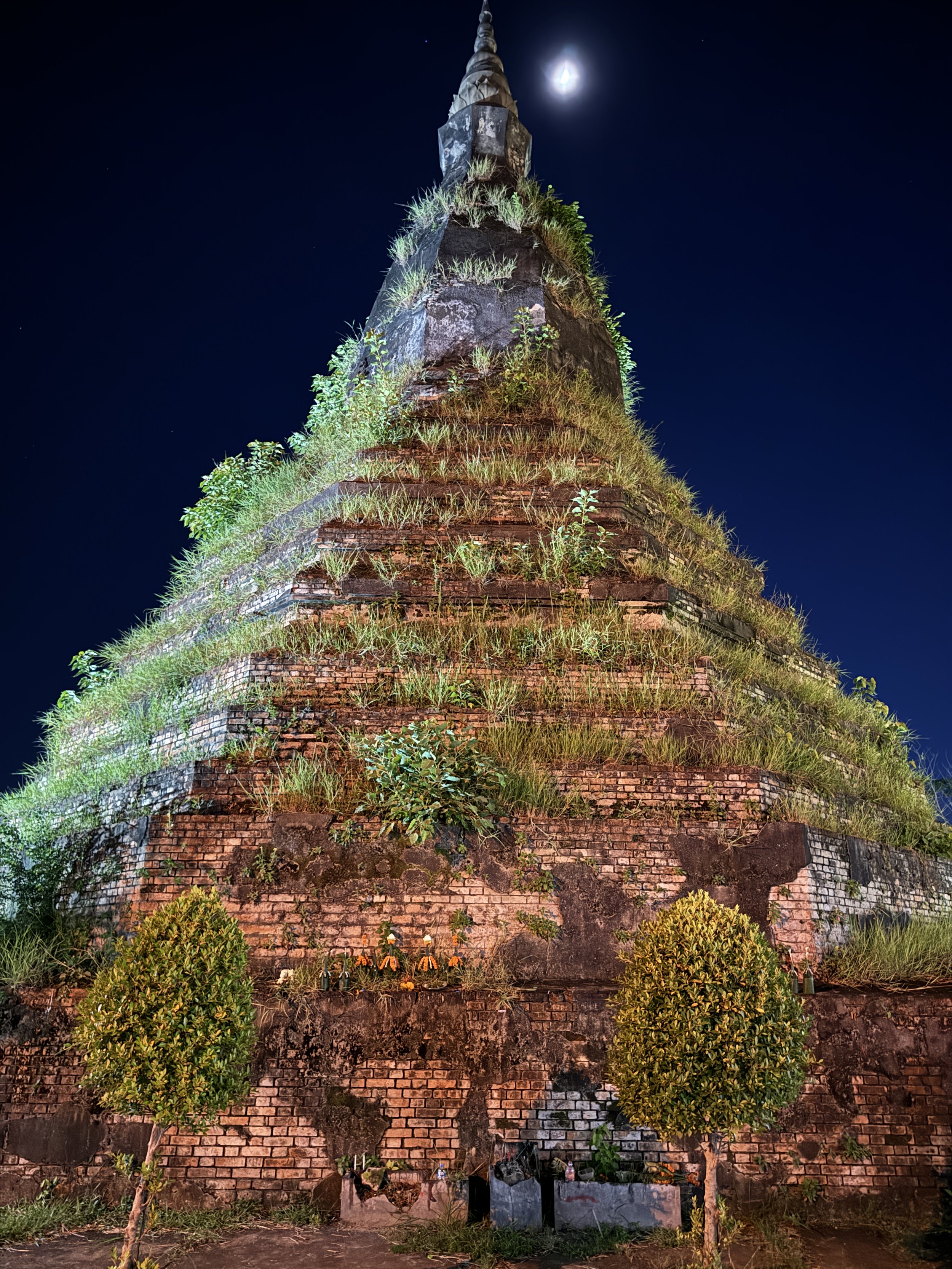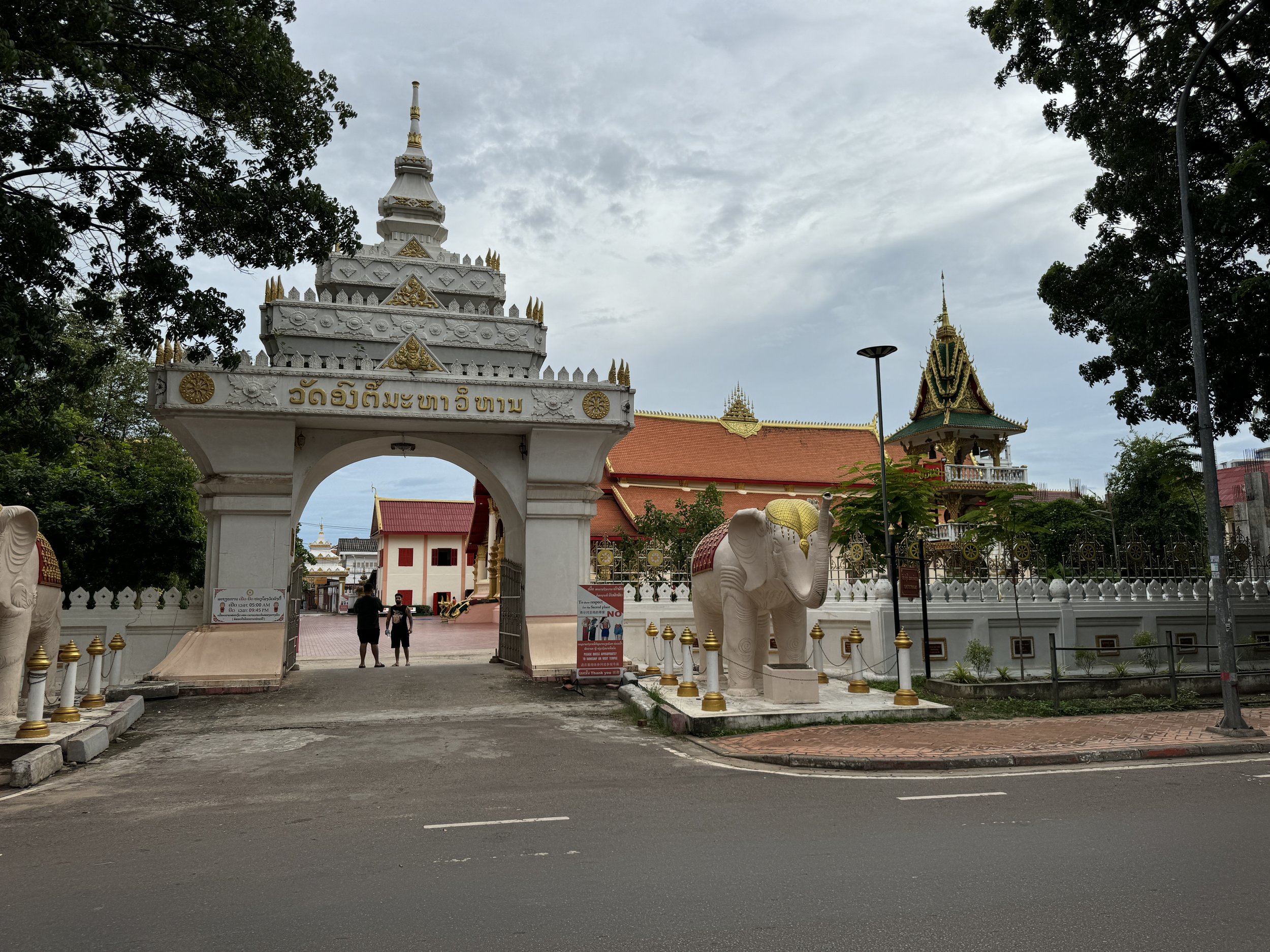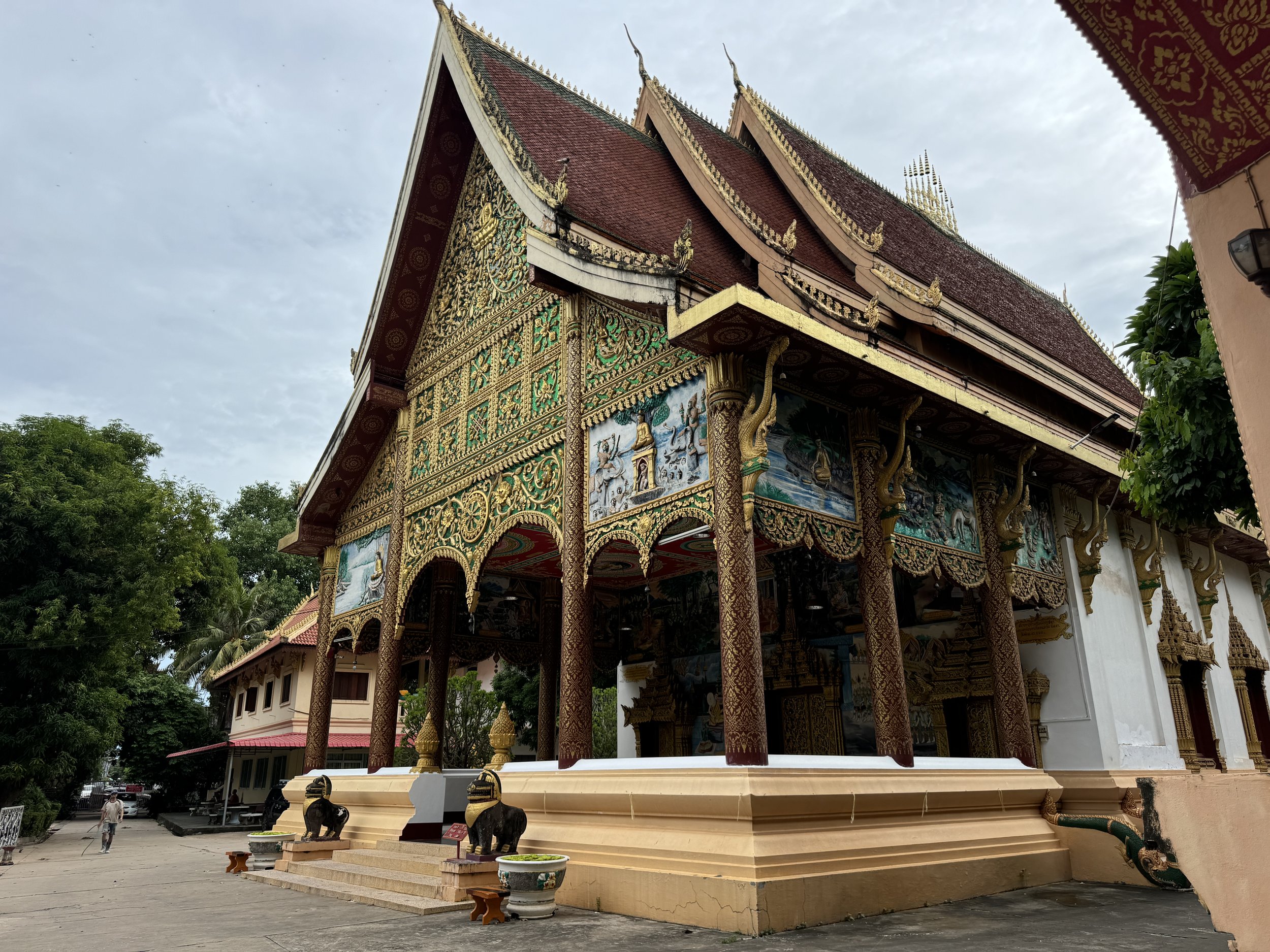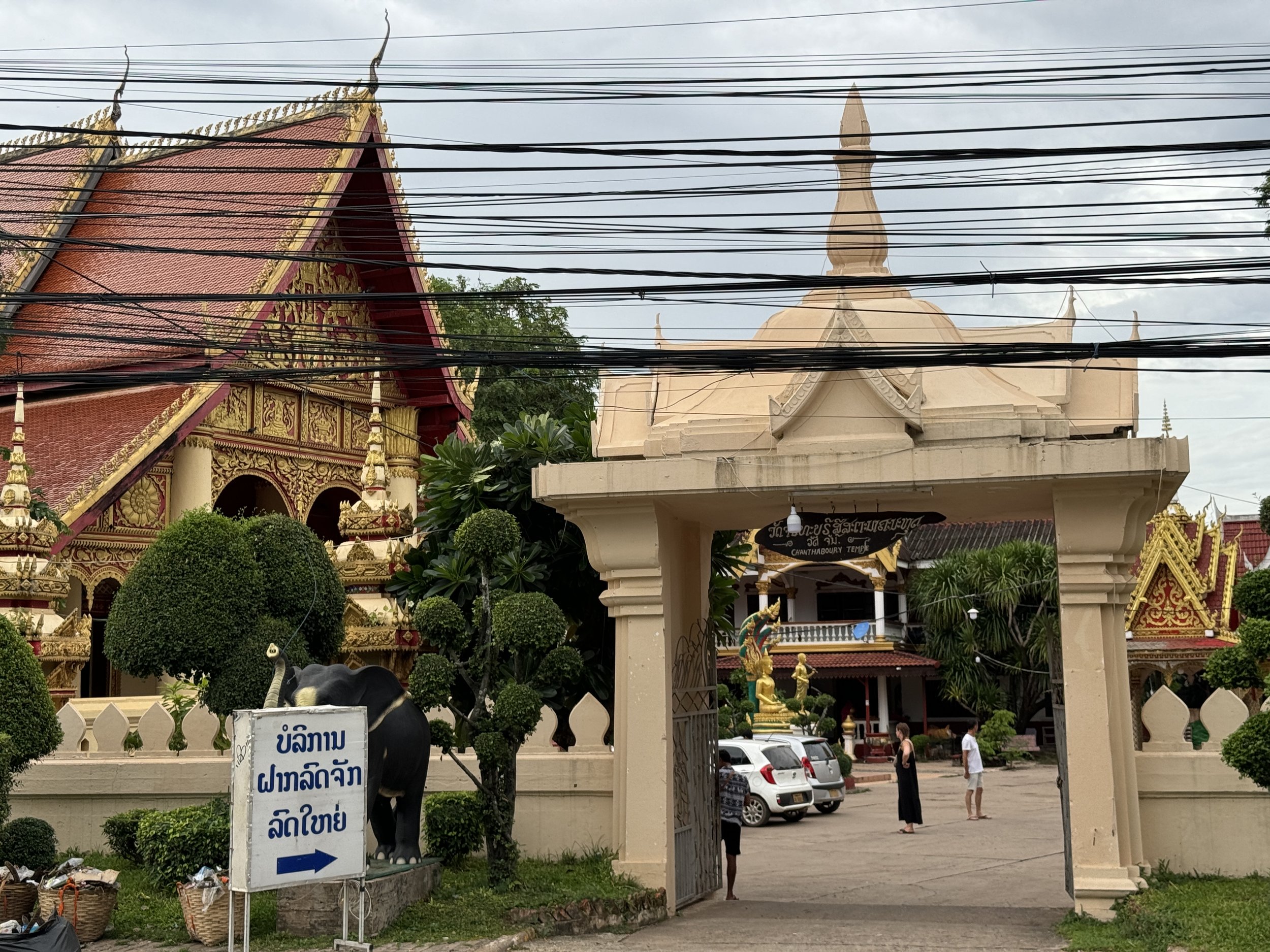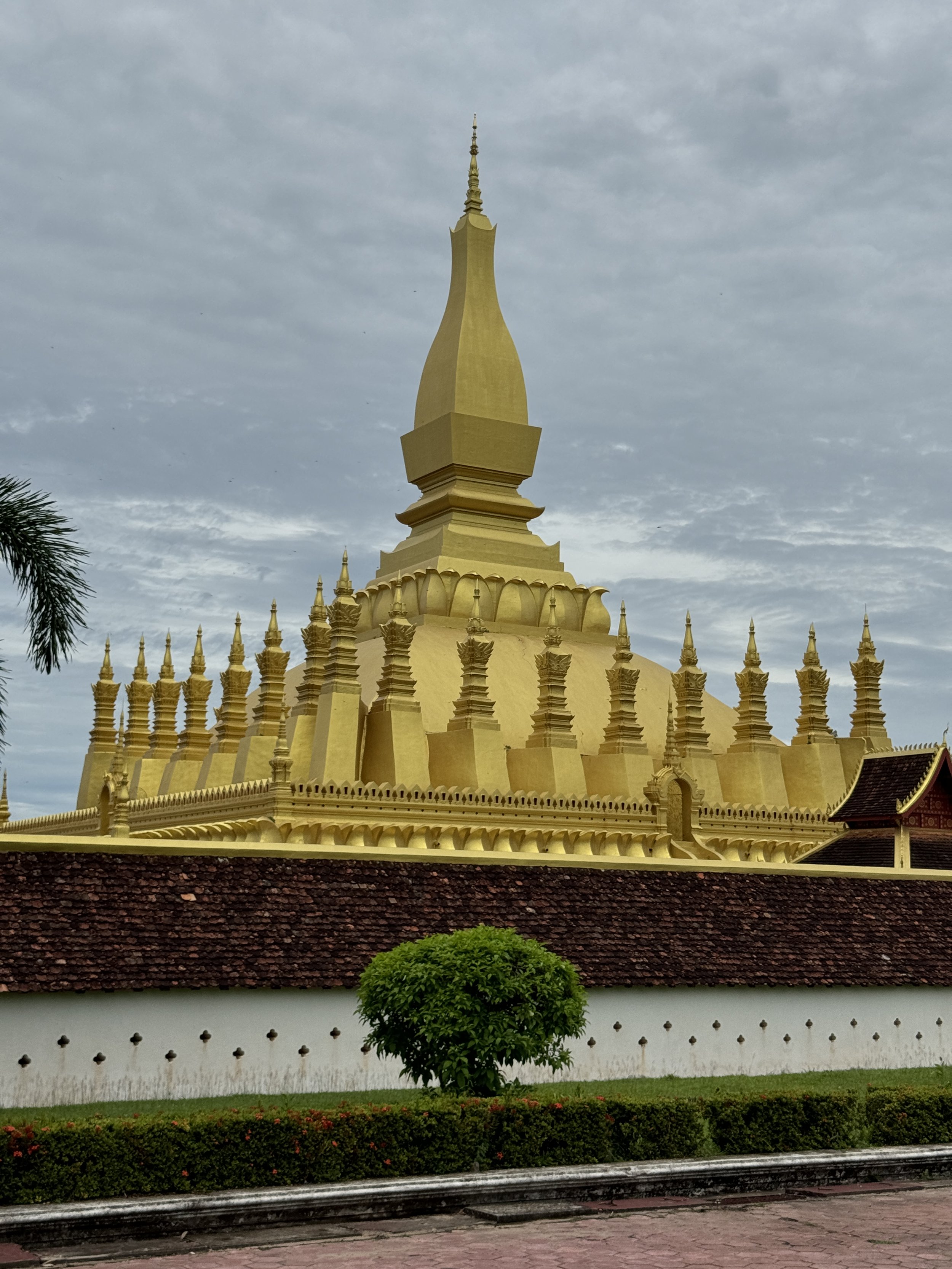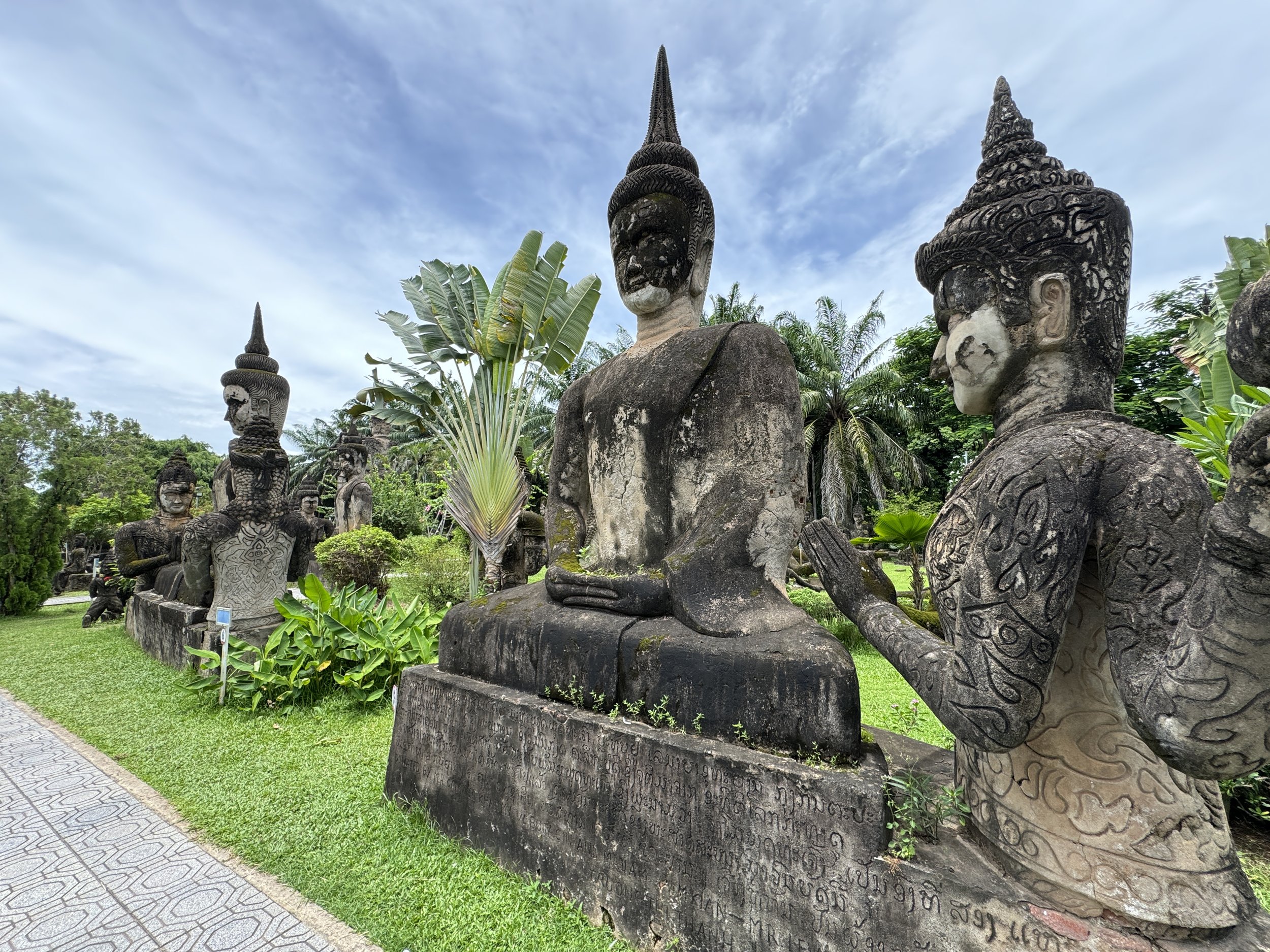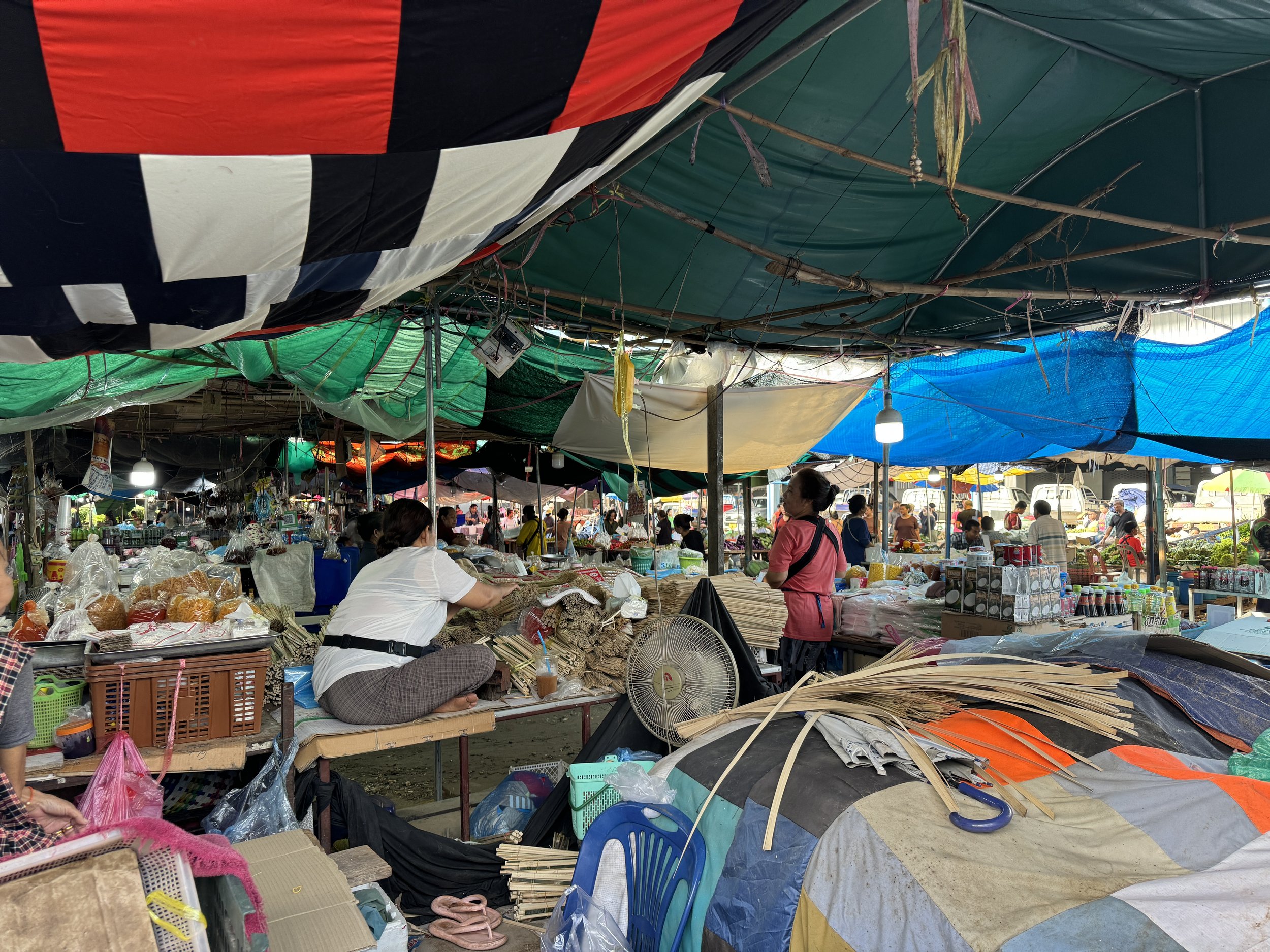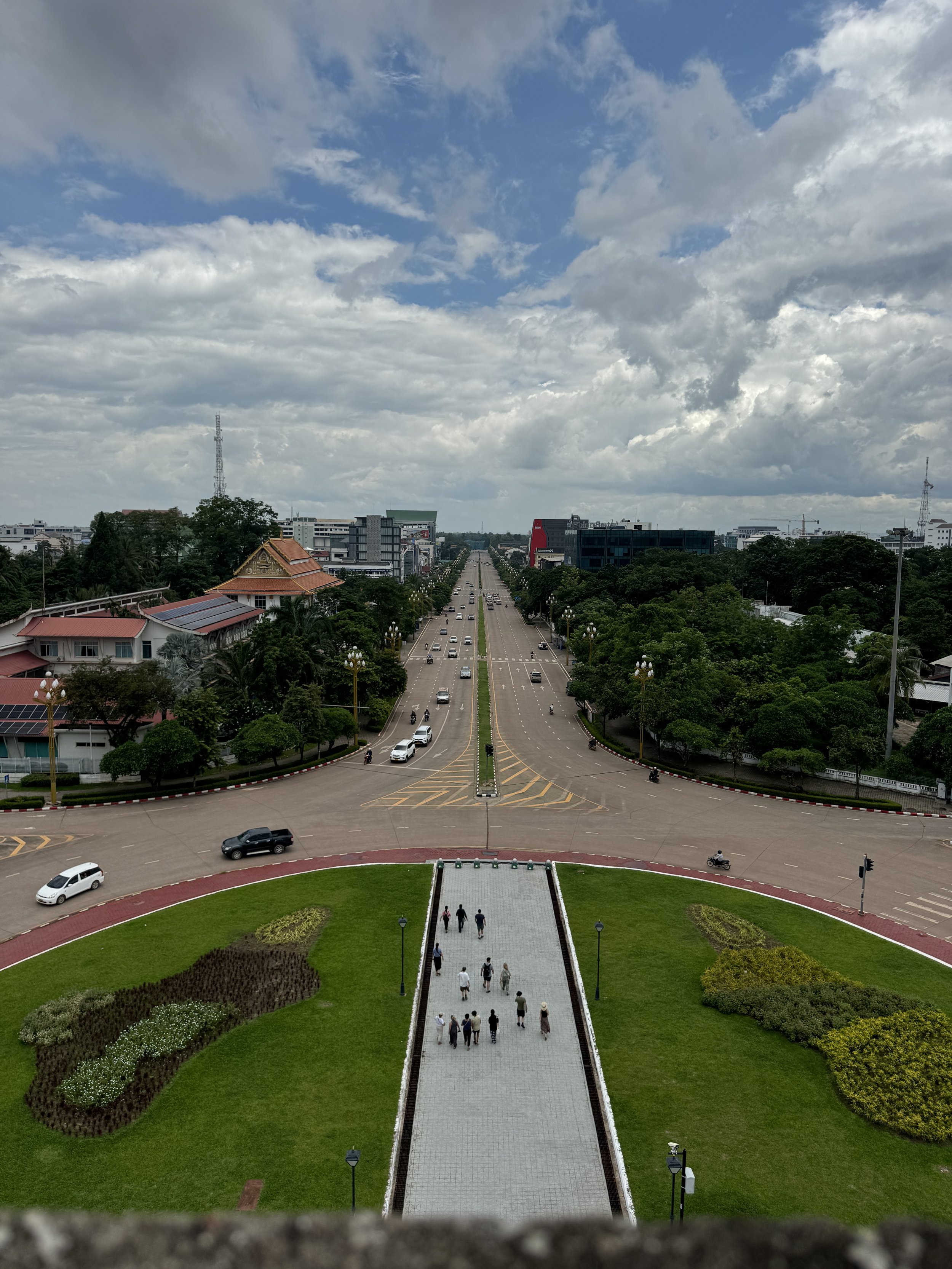July 17
Vientiane
Vientiane is the capital and largest city in Laos. A little over 10% of the population of Laos lives in Vientiane. It sits in a location that has been continuously inhabited since at least the 6th century. By the 12th century there are written records calling the city Viangchan, which the French colonizers rewrote to Vientiane.
As most places that are the largest city in a country, it is the economic and trade hub of the country. Most of the banks in Laos are headquartered here and even though it isn’t geographically centered it is the transportation hub and crossroads for travel throughout the country.
The National Assembly Building, Vientiane
Laos gained independence from France in 1954 following the defeat of French forces at Dien Ben Phu. The modern history of all of SE Asia is connected by the thread of western colonialism, and Laos, Cambodia, and Vietnam specifically by French Colonialism. The remnants of that colonialism is still omnipresent in SE Asia. From the architecture of the buildings to the names of businesses and institutions, French is everywhere in Laos.
By the way, as if you needed another reason to hate the French, here’s one: following World War II, after putting members of the German SS on trial for war crimes, the French gave those members a reprieve from the death penalty, but only if they would go to SE Asia and do to Asians what they had just been tried for war crimes for doing in Europe.
Revolution Monument
The United States has, of course, had a long and well documented history of meddling in Southeast Asia as well. The US government’s ruinous policies throughout the 50’s, 60’s, and 70’s included overt and covert wars for the sake of “freeing” Southeast Asians from Communist oppression, mainly by killing as many of them as possible. This was the implementation of a foreign policy strategy known as “Better Dead than Red.”
By the end of the 1960’s, while the overt war in Vietnam was on US TV on a nightly basis, the covert operations in Cambodia and Laos were still out of sight. Throughout the 1960’s the US carried out a covert bombing operation in Laos. The scale of the operation is almost unbelievable: The US dropped a planeload of bombs on Laos every eight minutes, 24 hours per day, every day, for nine years.
It is estimated that 80 million unexploded bombs still exist in Laos, and every year civilians are killed or maimed when the ones that haven’t been discovered and disarmed explode.
Visiting the COPE Center in Vientiane is a sobering experience. The center assists modern-day victims of Unexploded Ordinance with prosthetics, assistive devices, and physical therapy. Like my visit to the Killing Fields in Cambodia, I felt it was important to see the work being done to both heal and remember the damage of colonialism and warfare.
Statue of a woman and child running from a bomb attack. The statue, at the COPE Center in Vientiane, is made from shrapnel and unexploded bomb casings.
Once Laos gained independence, there were other issues. A civil war, an incursion by Vietnam, and the eventual takeover by the Communist Party and transforming Laos into a totalitarian Marxist-Leninist state.
By, in the 1990’s, Laos was a crumbling country that had little chance for success. Laos ended up taking part in the economic reforms that started sweeping most communist countries in the 1990’s, from the USSR to China. That has yielded positive results and Laos is getting its share of the huge financial growth happening throughout SE Asia.
Visiting the Patuxay (pronounced pat’ -oosay) Monument in the center of Vientiane I saw many Lao visiting, and I felt good for them. Maybe their country is finally shaking off the bad and on the brink of good times. They deserve no less, and the Patuxay Monument (Victory Monument) seems like a great symbol for hope in the future.
The Patuxay Monument memorializes independence from France, symbolically modeled after the Arc d’Triomphe with Lao artistic details.
There are more temples in Vientiane than I think I’ve ever seen anywhere. You can’t walk more than a few blocks without running into one. Some are small and humble, but many are dramatic and even a bit ostentatious.
I also visited Buddha Park, a garden and statuary outside the city center, where there are dozens and dozens of Buddha statues of all different sizes. The smallest are probably half a meter tall and the largest are 10 meters or larger. It was a fascinating visit, and another good way for me to learn how to navigate a scooter in big-city traffic. I think I’ll have to remember how to follow traffic rules again when I return to the US.
Wat Inpeng, Vientiane
Vientiane has been a great visit. I know I’ve just touched the surface of what the city has to offer, but I’m craving more of the countryside, and I’m hoping to get that in Vang Vieng and Luang Prabang.
Like with other cities I’ve visited on my trip, I’d like to return to Vientiane someday.
A view over Buddha Park, Vientiane





